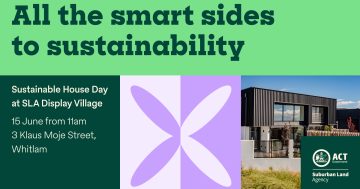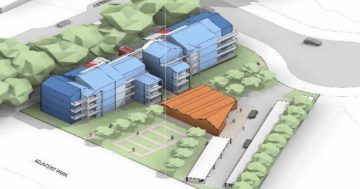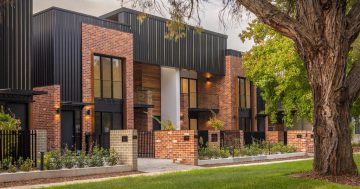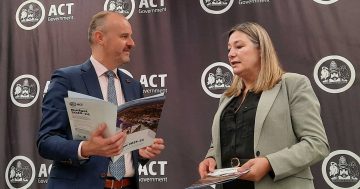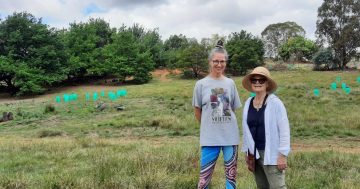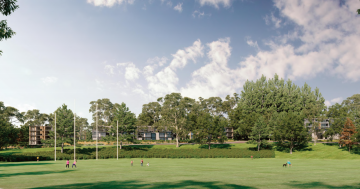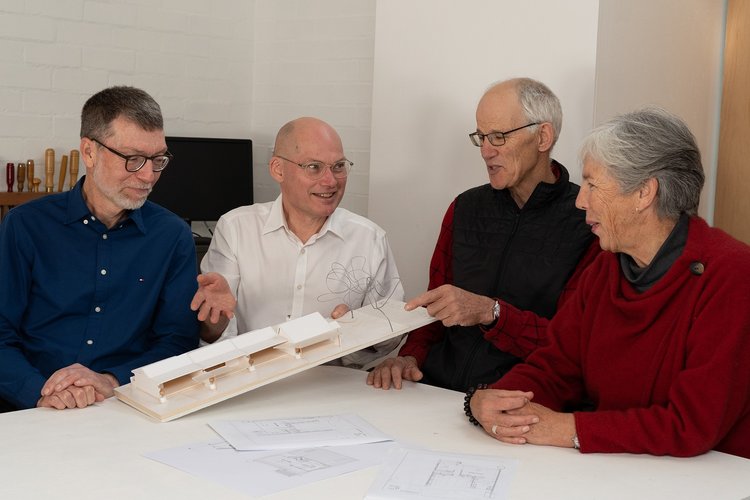
The Stellulata Cohousing team: (from left) Ian Ross, architect Brett Lowe, Joss Haiblen and Trish Macdonald. Photo: Stellulata Cohousing.
A small co-housing proposal in Ainslie that might offer an alternative housing model in which resources can be shared in a community setting is a step closer to fruition after the first approval of a variation to the Territory Plan as part of the ACT Government’s Demonstration Housing Project.
Retired ACT inner-north residents and friends Ian Ross, and couple Joss Haiblen and Trish Macdonald, looked to the co-housing model so they could age in place in a cost-effective, supportive environment while still having their privacy, sharing resources and downsizing to reduce their ecological footprint.
The co-housing concept, which started in Denmark and is different to previous modes of communal living or multiple occupancy development, is a growing worldwide movement, including in Australia.
The size can vary, but they are mostly much bigger than the Angas Street proposal in Ainslie, which has been in train for more than three years.
The approval of DV376 means the already submitted development application can proceed and be open to comment from the community.
The group has formed a company, Stellulata Cohousing, to develop the site and set up the shares-based ownership structure.
The proposal is for three single-level units and a two-storey communal area, with kitchen, living room and guest bedroom on a standard residential block.
Mr Ross said the group is in negotiations with a third-party to complete their community.
It has been a long haul for the group which has had to negotiate a planning system not used to an unfamiliar proposal such as theirs. Celebrations are on hold until they clear the approvals process, hopefully by Christmas, and find a builder in early 2022.
“Realistically, I don’t think we’ll be moving in until 2023,” said Mr Ross.
The group has spent their lives in the ACT’s inner north and wants to stay in the area, but there have been few downsizing options that suited them.
“We were classic cases of the missing middle,” said Mr Ross. “We were sitting on big houses, families had left, and we were wanting to downsize, but the incentives aren’t there.”
Fortunately, the group had the financial means to think outside the box to stay in the inner north, paying $1.2 million for 24 Angas Street, an old Tocumwal house on a 49 metre by 20 metre block, with few trees and great solar access, which is perfect for their needs.
Around the time they discussed a co-housing option, the ACT Government opened its Demonstration Housing Project to proposals and Mr Ross acknowledges that despite challenges with the planning system, it has made their dream possible.
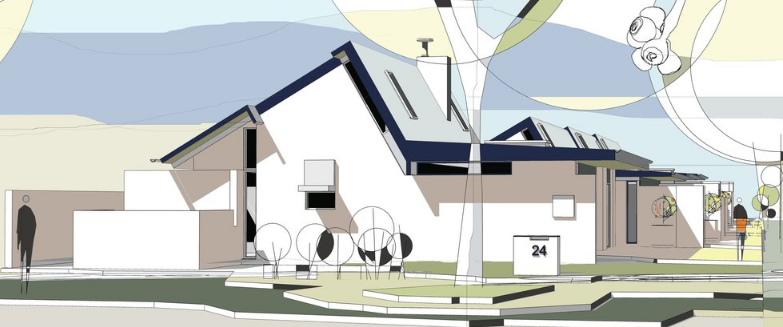
Stellulata Cohousing’s proposed co-housing development in Angas Street, Ainslie. Image: Stellulata Cohousing.
“It’s a great plan to try out a few things in a way that wasn’t threatening to the rest of the community,” he said.
Mr Ross said the co-housing concept faces planning hurdles everywhere because bureaucracy just doesn’t recognise this kind of design, in the same way banks and financial institutions struggle with the concept.
He acknowledges the group is in a privileged position to acquire property in the ACT’s inner north in a rising market, but said the concept is still valid for people struggling to afford a home on their own who want to minimise their costs.
“We think the model is good, and we think a small co-housing [project of] three to seven units is doable in lots of places in Canberra,” said Mr Ross.
He believes the proposal has been well received by the Angas Street community.
“Our project is designed to be low impact both in terms of sustainability and the visual impact,” said Mr Ross.
“From the street, our design really looks like just another suburban house, and locals recognise that.”
While the project’s delays have been frustrating, it has given the group more time to think about the community aspects, and they are rewriting the company’s constitution to build in more community decision-making processes.
“If you’re trying to build a community, you want people you believe will come into the community to contribute and do their fair share, and be the people you can share your second lounge room with comfortably every day of the year,” said Mr Ross.
Financially, new entrants would buy a resident’s share, but the remaining occupants would hold a veto over any application.
“In a big development – 30 to 50 units – the community can afford to have more flexibility about comings and goings and the vacancy level, but when there is just the three of us it’s a fairly constrained situation,” said Mr Ross.
ACT Minister for Planning and Land Management Mick Gentleman said the proposal would provide a ‘hands on’ opportunity to test the effectiveness of co-housing in the RZ1 zone.
“This co-housing proposal is a great alternative for people who want to stay in the community that has become their home, but wish to downsize,” he said.
“By downsizing, larger properties are then freed up for growing families to move into, creating sustainable communities.”
The ACT Government hopes the Demonstration House Project, which has caused disquiet in some residential areas, will lead to more diverse housing choices for Canberrans.
To learn more about the Ainslie project, visit Stellulata Cohousing.
To learn more about co-housing in the ACT, visit the Canberra Cohousing Facebook page.












